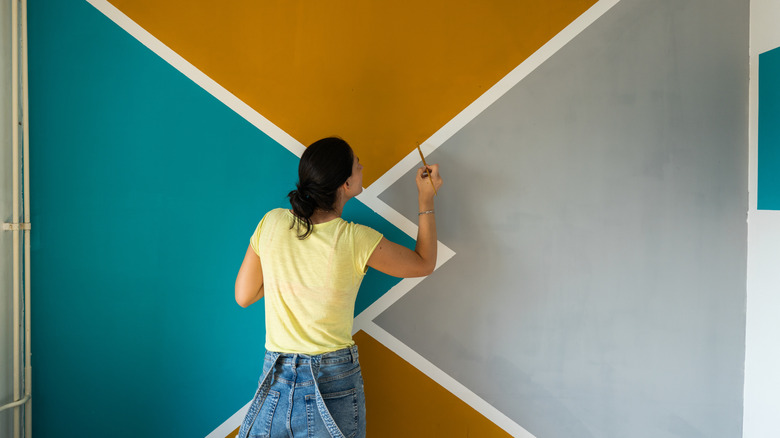HGTV Star Hilary Farr's Accent Wall Advice Proves Home Design Has No Boundaries
Designing an accent wall can seem like a daunting task if you aren't an interior design professional. You may feel like there are so many factors to consider that it's impossible to pull the look off the right way. After all, sources often recommend matching the wall with the surrounding color scheme and existing design elements perfectly. However, it doesn't have to be that complicated, according to HGTV star Hilary Farr. The interior designer's accent wall advice proves that home design has no boundaries.
"The color does not have to have anything to do with anything else in your room," Farr said during HGTV's "Design Minute with Hilary Farr." "It can be a stand-alone color that just makes a great statement. You might decide to paint it black. There's really no rules on an accent wall except choosing the right wall." Farr's inspirational accent wall idea is great for those who feel that they have to limit their creativity when designing an accent wall. However, while the design feature doesn't have to match the surrounding elements perfectly, it's still a good idea to at least take the room's aesthetic and color scheme into consideration. This way, you can ensure everything is cohesive — even in a room with an accent wall that makes a statement.
How to apply Hilary Farr's advice while maintaining a cohesive space
If you feel inspired to follow Farr's no-rules accent wall idea to liven up your home, there are a few things to take into consideration to still achieve a cohesive look, such as the color scheme of your living space. Just as Farr suggested, the colors don't have to match. However, they should at least complement each other. For example, a room with a neutral color palette doesn't have to include a neutral-colored accent wall. You could select a bold shade instead so that the accent wall serves as a pop of color. Still, that paint shade should pair well with the colors used throughout the room. Do some research regarding what colors work well together, and comparing with a color wheel or color samples can help you generate ideas regarding what works and what doesn't.
If you have beige walls, for example, consider selecting blue, brown, or green paint for your accent wall. Light grey, brown, and blue pair well with white walls. If you have a more unusual room color scheme, find out which shades pair well with it to use for your accent wall. Orange and blue are complementary, and the combination would stand out in a high-energy space, while shades of blue and purple might work well for a relaxing environment.
You might have also noticed Farr's black paint color suggestion. If you'd like to go this route, opt for a versatile neutral black paint shade. Your accent wall should pair well with your room's existing design aesthetic, too. If you're adding an accent wall to a modern farmhouse style room, for example, make sure it doesn't clash with it. Finally, just as Farr emphasized, you need to select the right wall to designate as an accent wall. A wall that isn't blocked with furniture and is located near natural light and room entry points is a good option.

